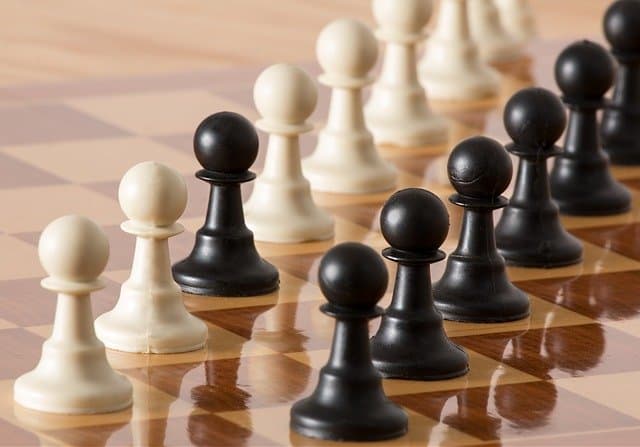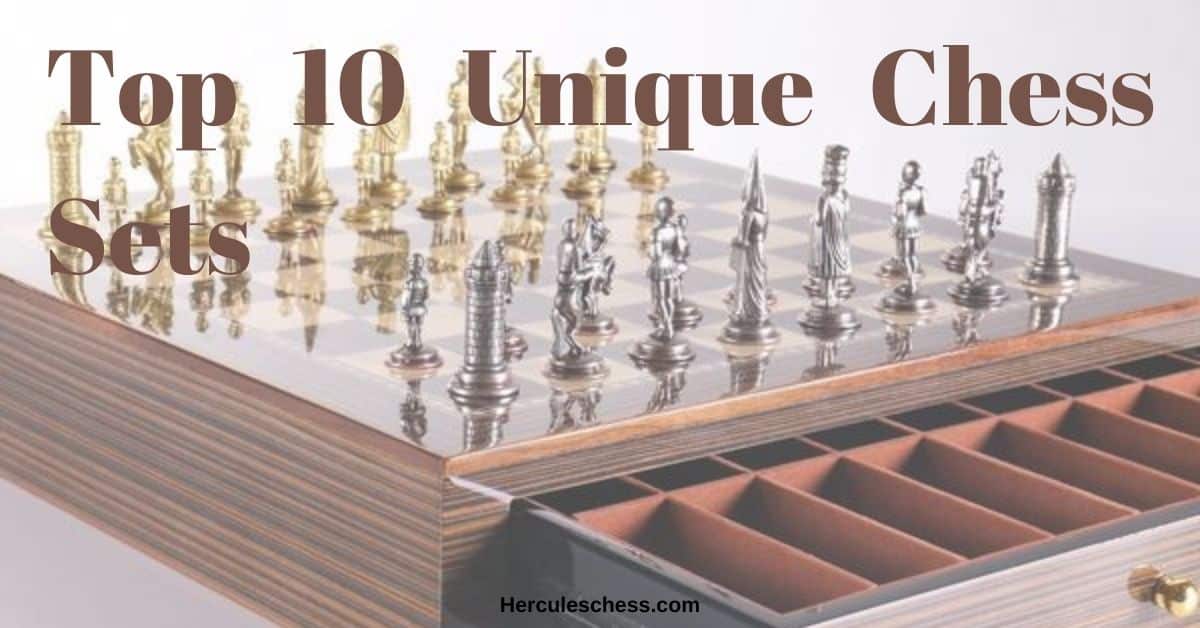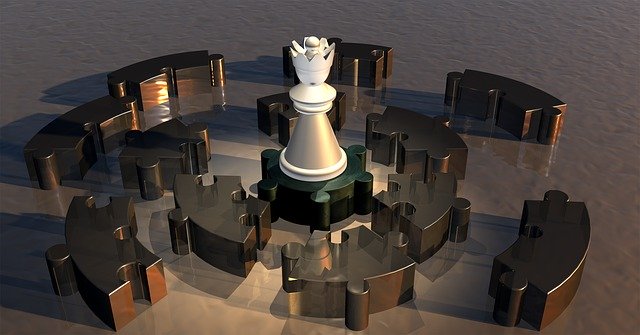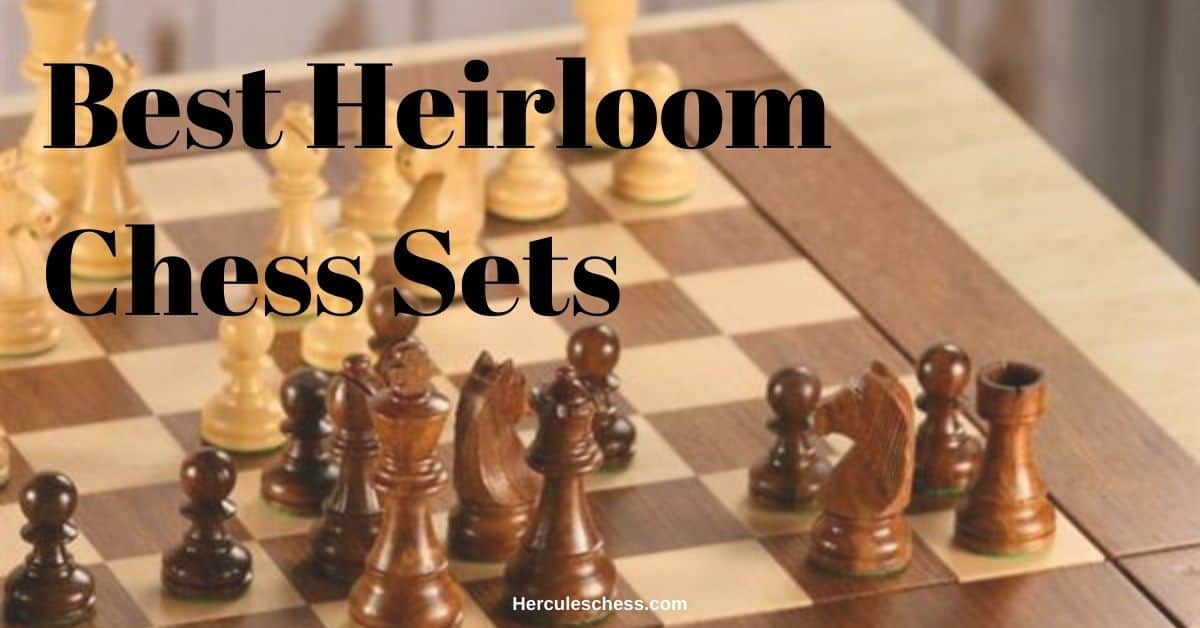Your Pawns are your infantry, or foot soldiers. Because they are on foot, they move slowly and can’t escape easily from more powerful pieces. There are more pawns on the board than any other piece and they can be sacrificed to open up lines of attack.
How does the Pawn move?
In general, Pawns can only move one square straight forward, except on their first move, when if they wish, they can move two squares straight forward. It’s the starting position of the chess game and White has just played the move pawn to e4. The pawn moved 2 squares forward on it’s first move.

The e4-pawn moved 2 squares forward on its first move
How does the pawn capture?
Unlike the other pieces, the Pawn does not capture in the same way as it moves. Pawns can only capture other pieces by moving one square diagonally forward, to the right or the left. The white Pawn is moving up the board and the black Pawn is moving down the board. In the position below, This Pawn can capture the black Knight or the black Pawn. Equally, if it was Black’s move, the black Pawn could capture the white Pawn

The Pawn Game
It is always a good idea to play the Pawn game with a friend so you can practice moving and capturing with the Pawn. Start with the Pawns in this position.

The winner is the player who captures all of their opponent’s pieces or gets a Pawn to the end of the board. White always moves first; you can toss a coin to decide who plays White.
Tips to remember when moving a pawn:
- Remember that pawns can never move or capture backward
- Don’t move more than two or three Pawns in the opening stages of the game.
Related Post: How do all the chess pieces move?
Pawn Promotion
If a pawn successfully reaches the other side of the board, then it can become any other piece. This is called a Promotion. Some people believe that a pawn may only be exchanged for a chess piece that was previously captured. This is not true.
The Pawn can transform himself into any piece: Knight, Bishop, Rook, or Queen. We know how valuable the Queen is and therefore most players choose to change their Pawn into another Queen.

White can queen his d7 Pawn by moving it to d8. White could also queen his Pawn on f7 by capturing the black Bishop on g8. Pawn promotion is a great way to win material. Instead of taking pieces from your opponent, you make new ones for yourself!
Pawn Rams and Levers
Pawns are really strange. They are not like the other pieces. They don’t move in the same direction that they capture and they can’t go backwards. Because they are different, the pawns come together in two special ways.
- Ram
- Lever
A ram is when two pawns are butting heads. They stand on the same file and block each other from moving.
Diagram Showing A Ram

A lever is when two pawns can take each other. They’re ready to pry open a file.
Diagram Showing A Lever

Rams and levers are road signs in the pawn structure. They guide our plans. Rams are the most solid feature of a chess position. They block lines and limit our freedom. One goal of chess strategy is to give the pieces freedom. A good way to do that is to get rid of the rams that are blocking us. Another way is to open up lines by trading pawns. In either case, we usually need levers.

This common pawn structure arises after the move 1.e4 e5. The ram at e4/e5 is now the focus of the game. White has a lot of different setups to choose from here, but there is only one correct plan: attack the ram! In most games this is done with the d4 lever, as in the following openings:
- Scotch Game: 1.e4 e5 2.Nf3 Nc6 3.d4
- Giuoco Piano (Italian Game): 1.e4 e5 2.Nf3 Nc6 3.Bc4 Bc5 4.c3 Nf6 5.d4
- Ruy Lopez (Spanish Game): 1.e4 e5 2.Nf3 Nc6 3.Bb5 a6 4.Ba4 Nf6 5.0-0 Be7 6.Re1 b5 7.Bb3 d6 8.c3 0-0 9.h3 Bb7 10.d4
The other option is a f4 lever. That’s the idea behind these lines:
- King’s Gambit: 1.e4 e5 2.f4
- Vienna Game: 1.e4 e5 2.Nf3 Nc6 3.f4
The same thing also applies to black after 1.e4 e5. One way that black gets an active game is the d5 lever:
- Falkbeer Counter Gambit: 1.e4 e5 2.f4 d5
- Danish Gambit: 1.e4 e5 2.d4 exd4 3.c3 d5
However, since white goes first, they can often make it difficult for black to play …d5. And that leaves black with a defensive position. This is one reason many players like to answer 1.e4 with something other than 1…e5. The f5 lever is rarer because Black plays an early …Nf6 in most defenses. But it does happen in some lines:
- Phillidor Defense: 1.e4 e5 2.Nf3 d6 3.Bc4 f5!?
- Jaenisch Gambit: 1.e4 e5 2.Nf3 Nc6 3.Bb5 f5!?
The next diagram is from the Queen’s Gambit:
There is a ram at d4/d5 and white has already made a lever with c4. The purpose of the lever is very clear. If Black captures by 7…dxc4? 8.Bxc4. This trade helps White in several ways.
- The Bishop is active on c4.
- The c-file is open for the Rook.
- And now that the ram is gone, white’s centre pawns are free to advance.
The best plan for Black is to attack the white centre with with a lever of their own. The Knight on f3 makes it hard to play e5, so black normally aims for c5.
The natural looking move, 7…Nc6? is a typical mistake. Blocking the pawn on c7 leaves Black in a passive position.
It’s much better to prepare a lever by 7…Nbd7 or 7…b6. For example:
7…Nbd7 8.Rc1 c6 9.Bd3 dxc4 10.Bxc4 b5 11.Bd3 a6 12.0-0 c5!
OR
7…b6 8.Bd3 Bb7 9.0-0 Nbd7 10.Rc1 c5!
Black is doing fine in both variations. Not all rams should be attacked. There are many situations where a lever only weakens the pawn structure. In the diagram below we have a ram at d4/d5 again, but this time the white c-pawn and black e-pawn are missing. That makes a big difference

The lever 1…c5 gives black a weak isolated d-pawn (2.dxc5! Bxc5 3.Rfd1). Best move for Black is 1…Bd6. Same thing goes for White. The lever 1.e4 would also create a weak isolani on d4 after 1…dxe4. The best approach for white is to start a minority attack using his queenside pawns. Sometimes, rams are jammed together. In the following diagram, there are rams on both central files.
Note: When you’re deciding on a plan, always look for the rams in the pawn structure and think about which lever you can make. Most good plans include a pawn lever.
Pawn Chain
A pawn chain is a line of blocked pawns which are all connected , like the white ones at d4 and e5 or the black ones at d5 and e6. A pawn chain has both a head and a base.
The pawn on d4 is the base of white’s chain and e6 is the base of black’s. Each player has two levers that they can use against the rams. Black has a choice between …c5 and f6. White’s levers are c4 or f5.
Usually the best strategy is to attack the base of the opponent’s pawn chain. Playing a lever against the front of a chain often leads to a backward pawn. (The d4 pawn is weak if white plays c4 and black replies …dxc4). The French Defense is famous for its pawn chains. The structure shown here is reached in many lines, including the advanced variation:
1.e4 e6 2.d4 d5 3.e5
Black piles the pressure on the base of the white pawn chain.
3…c5! 4.c3 Nc6 5,Nf3 Qb6
Although the f5 lever is a good idea for white, it’s not easy to arrange early in the game. White is busy keeping the d-pawn strong. Instead of playing for a lever, white can attack with pieces on the Kingside. Because the pawn chain stretches into black’s side of the the board, it gives the white pieces more freedom to move. The lever f6 is sometimes good for black, even when it leaves a backward pawn on e6. Black needs active play to make the plan work.
Special Pawn Move – En Passant
The French phase En Passant means In Passing. It’s a special way that pawns capture pawns. It is also the trickiest rule in chess. En Passant occurs when a pawn makes a double jump and lands beside one of your pawns. You can take it like it only moved one square
There are three things to remember when en passant
- Only a pawn that has moved two squares can be taken this way
- The pawn is taken on the square it passes over. In other words, it is captured in passing.
- An en passant capture can only be made on the very next turn.
Related post: What does en passant mean in chess?
Square Of A Pawn
The square of a pawn is a way to see if a King can catch a pawn. This strategy is quite useful during the endgame when a pawn is desperately rushing to the other side of the board to get promoted. We visualize the four sides of a square so that it includes the square that the pawn is standing on and the queening square.
If the King gets inside the square, then he can stop the pawn form safely becoming a new queen. By using the square of the pawn, we avoid calculating with the usual “I go here then he goes there …” method. Instead we have a visual picture of what will happen
Note: Because of the double jump, the square of an unmoved pawn is drawn from the third rank.
White to move wins, Black to move draws

Pawn Structure
1. Weak Pawns
Pawns are weird pieces. They’re slow. They can’t move backward and they often get blocked. That’s why the position of the pawns doesn’t change very quickly. When we look at pawns together as a group, without the other pieces, we call it pawn structure.
Pawn structure is the part of a chess position that stays most constant. It’s like a background in which the pieces move around. But it’s more than that. Pawn structure is the framework that shows the pieces where to go. Looking at the pawn structure is a big help in choosing a plan and to know where to to move the pawns. It’s a map we can follow to decide on our moves.

This is the perfect pawn structure. All of the pawns are free to move and any pawn can be defined by its neighbour just by advancing one square. But the pawns can’t sit there through the whole game! Some of them have to move to let the pieces out.
When pawns do advance though, they sometimes become weak. A pawn is weak if it’s hard to defend. This usually happens when it loses its freedom to move and can’t be guarded by other pawns.
Three common types of weak pawns are:
- Isolated
- Backward
- Doubled
An isolated pawn (isolani) doesn’t have any neighbours. The white d-pawn is isolated.
A backward pawn has been left behind by its neighbors. The black d-pawn is backward.
A doubled pawn shares its file with a friend! The white c-pawns are doubled.
An isolated or backward pawn is weak because it cannot be guarded by other pawns.n If they are attacked, they have to be defended by pieces, which takes away from the freedom of the pieces.
This problem gets much worse in the endgame when there are fewer pieces. Many endings are won just because of active versus passive pieces. Here are some general rules for how to play when there are weak pawns:
If the opponent has weak pawns:
- Attack them so they have to be defended by pieces
- Keep the game simple
- Trade into an ending where the opponent has passive pieces.
- Don’t weaken your own pawns
If you have weak pawns:
- Try to trade them off
- Complicate the game
- Avoid trading into an ending
- Weaken the opponent’s pawns.
When to move your pawns in the different stages of the game
Opening
In the opening stage of the game, your goal is to move your pawns towards the centre of the board. Ideally e4,d4,e5 and d5 squares. This helps to gain control over the board. In most cases, you want to move your two central pawns two squares forward to open lines for your Bishop and Queen.
Pawns such as g3 and g6 can be moved at the start of the game if you wish to fianchetto your Bishop for more active play. You must also try to create a lever with your pawns as previously discussed to challenge for the centre.
Middlegame
Pawns must move further up the board to gain spacial advantage. Once you’re King is safely tucked in, steadily move your pawns forward and attack weaknesses in the enemy camp.
If your opponent’s pieces are underdeveloped, find a way to open lines with your pawns and attack his position before he regroups his pieces. One example is opening the e-file with your pawn if his King is stuck in the centre. You can then pile up pressure along that file with your major pieces to create disaster.
At times, you should be careful not to over extend your pawns too much. If your attack fails, you are left with numerous pawn weaknesses in the endgame
Endgame
In the endgame, you should advance your pawns forward when you have a pawn majority on either the Kingside or Queenside. This will help to create a passed pawn than can potentially turn into a Queen. Be careful not to advance your pawns without a clear reason. Sometimes they can be targets.






